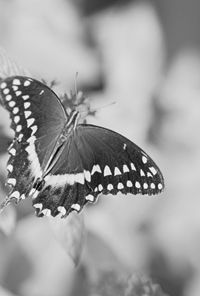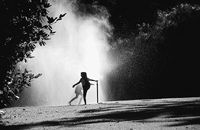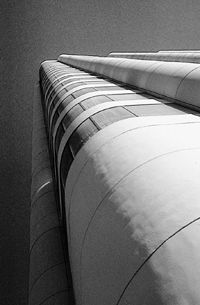7 Hot Summer Tips II
 Back in our July 1998 issue, we gave you seven hot tips for great summer photos. As summer approaches this year, we present you with seven more hot summer photo tips.
Back in our July 1998 issue, we gave you seven hot tips for great summer photos. As summer approaches this year, we present you with seven more hot summer photo tips.
1. Bug Somebody!
Summer bugs can be annoying. But they can also make great photo subjects—challenging, and rewarding. Because insects are on the smallish side, you'll probably need some type of close-up gear—a macro lens, a close-up lens, extension tube or bellows—to get good shots of them. The challenges include: finding photogenic subjects, getting close enough for a good shot, good lighting, and a good background. You can find the most photogenic insects on flowers and leaves—and foliage also provides colorful backgrounds for your photos. The best way to get close is to photograph the little critters first thing in the morning, when they haven't "thawed" for the day. Preset your lens at its closest focusing distance (or preset a desired magnification with extension tubes or bellows), then, watching through the viewfinder, slowly move closer and closer until the subject comes into focus. Then take the picture. That's easier than trying to focus on a skittish subject, and minimizes your "close" time, so your subject is less likely to flee before you get your shot. Sunlight works well, as does electronic flash (flash offers the benefits of being available anytime, allowing you to stop down for more depth of field, and providing a very brief exposure time to minimize blur due to subject and camera motion). Photo by Lynne Eodice  2. Showdown at High Noon
2. Showdown at High Noon
The summer sun is bright and hot...and higher in the sky than at other times of year. And everyone knows high noon is not the best time for outdoor photos. So, if you'd like a good challenge, dress cool and take your camera out at noon, and try to get some good photos. You'll find that people make poor high-noon subjects (the high-angle lighting is very unflattering, and causes them to squint unattractively). But high-noon sunlight is great for bringing out the texture in vertical surfaces, and for "classic" postcard scenics. On nearby subjects, experiment with different degrees of fill-flash to lighten the shadows. Photo by Lynne Eodice  3. Summer Fun
3. Summer Fun
Kids of all ages can be found enjoying in the summertime. Go out with your camera and an observant eye, and you'll find lots of picture possibilities with that human touch. You'll get the most spontaneous images by photographing unobserved, but don't just "spy"—let the subjects know you are there, then start taking pictures when they forget about you and go back to their activities. Photo by Lynne Eodice  4. Abstract Art
4. Abstract Art
Try to look at things you encounter every day for their forms rather than their functions, for their appearance rather then for what they are. Plants become studies in symmetry. Benches becomes studies in perspective. Palm trees become patterns. Tall buildings become studies in shadow and shape. Generally, you'll be shooting abstracts from close-up, but you can isolate interesting portions of a subject from farther away by using a long lens. The idea is to find interesting compositions—patterns, shadows, angles and the like. Photo by Mary Mcgrath















































